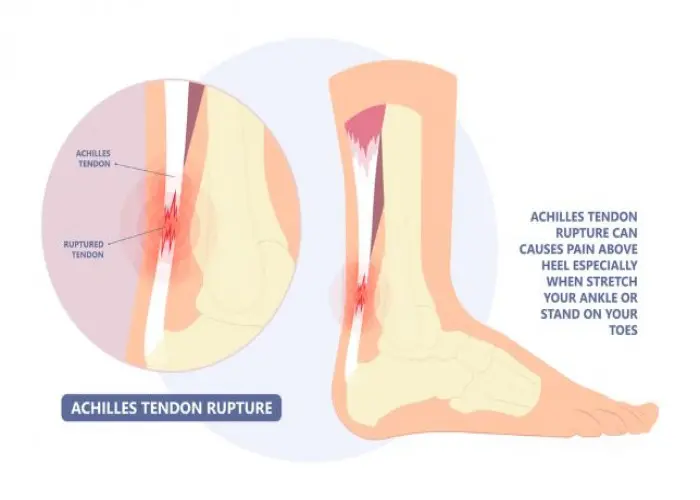 Welcome
Welcome
“May all be happy, may all be healed, may all be at peace and may no one ever suffer."
Q fever

Q fever is a bacterial infection caused by the bacteria Coxiella burnetii. It can infect both animals and humans and is typically transmitted through contact with infected animals or their products, such as milk, urine, feces, or birth products. The bacteria can survive for long periods of time in the environment, and people can become infected by inhaling contaminated dust or air.
Symptoms of Q fever can vary widely, and some people may not have any symptoms at all. When symptoms do occur, they usually appear 2-3 weeks after exposure to the bacteria and can include fever, headache, muscle aches, fatigue, chills, and sweating. In some cases, the infection can cause pneumonia, hepatitis, or other complications.
Q fever can be diagnosed with blood tests to detect antibodies to the bacteria. Treatment typically involves antibiotics, and most people with Q fever will recover completely with appropriate treatment. However, in some cases, the infection can become chronic and lead to ongoing symptoms.
Prevention of Q fever involves avoiding contact with infected animals or their products, wearing protective clothing when handling animals or their products, and taking precautions to reduce the risk of inhaling contaminated dust or air. People at increased risk of exposure, such as farmers and veterinarians, may be vaccinated against the disease.
Research Papers
Disease Signs and Symptoms
- Fever
- Headaches
- Fatigue (Tiredness)
- Fever and chills
- Cough
- Nausea or vomiting
- Diarrhea
- Sensitivity to light (Photophobia)
Disease Causes
Q fever
Q fever is caused by the bacterium Coxiella burnetii, commonly found in sheep, goats and cattle. The bacterium can also infect pets, including cats, dogs and rabbits.
These animals transmit the bacteria through their urine, feces, milk and birthing products — such as the placenta and amniotic fluid. When these substances dry, the bacteria in them become part of the barnyard dust that floats in the air. The infection is usually transmitted to humans through their lungs, when they inhale contaminated barnyard dust.
Disease Prevents
Q fever
A Q fever vaccine has been developed in Australia for people who have high-risk occupations, but it's not available in the U.S.
Whether you're at high risk of Q fever or not, it's important to use only pasteurized milk and pasteurized milk products. Pasteurization is a process that kills bacteria.
Disease Treatments
Q fever is treated with the antibiotic doxycycline. How long you take the medicine depends on whether or not you have acute or chronic Q fever. For acute infections, antibiotic treatment lasts two to three weeks.
People who have chronic Q fever usually must take a combination of antibiotics for at least 18 months. Even after successful chronic Q fever treatment, you'll need to go back for follow-up tests for years in case the infection returns.
Mild or nonsymptomatic cases of acute Q fever often get better with no treatment. However, if you have symptoms of Q fever or if you're pregnant, antibiotic treatment is recommended. Your treatment plan may vary if you're unable to take doxycycline.
If you have Q fever endocarditis, you may need surgery to replace damaged heart valves.
Disease Diagnoses
Disease Allopathic Generics
-
Cephradine
Adults 1 250mg 6 hours after 5/7 days or 500mg 1 in the morning 1 evening 5/7 days after 8 hours.
-
Ciprofloxacin
1 to 2 times a day according to age. 1+0+1 makes 14 days.
-
Chloroquine Phosphate
First single dose is 4 pills 6 hours after 2 pills. From next day 1 pill daily 2 times a day for 3 days. In children, the dose should be determined according to the same rules according to age.
-
Promethazine Hydrochloride
For nasal allergies (runny nose) and abnormal accumulation of blood in any part of the body.
1 pill or 1/2, 1, 2 spoons 3 times a day according to age.
-
Pheniramine Maleate
For nasal allergies (runny nose) and abnormal accumulation of blood in any part of the body.
1 pill or 1/2, 1, 2 spoons 3 times a day according to age.
-
Loratadine
For nasal allergies (runny nose) and abnormal accumulation of blood in any part of the body.
Adults 1 pill daily at night. 1+0+1 in hard condition. 1/2 pill 1 time a day for 2-12 years or 1/2+0+1/2 in severe cases.
Cannot be given to children under 2 years of age.
-
Desloratadine
For nasal allergies (runny nose) and abnormal accumulation of blood in any part of the body.
1 daily.
-
Ketotifen Fumarate (Oral)
Antihistamines with ketotifen are given to patients who have a cold and have slight chest tightness or shortness of breath.
Adults take 1 tablet 1/2 time a day (1+0+1 in solid state).
Over 2 years, 1 spoon 1/2 time a day.
-
Xylometazoline Hydrochloride
Medicines containing xylometazoline hydrochloride or oxymetazoline for nasal congestion.
Adults 0.1% drops 2/3 drops in both nostrils 2/3 times a day.
Boys-Girls: 0.0% drop 1/2 drop 1/2 time a day.
They are not to be used for a long time.
-
Ferrous Sulfate
If the patient feels weak after the fever is cured, any medicine like blood thinners and vitamin complex can be given to improve the general health.
1/2 teaspoon daily 3 times a day after meals.
-
Vitamin B complex
If the patient feels weak after the fever is cured, any medicine like blood thinners and vitamin complex can be given to improve the general health.
Consume 1/2 teaspoon 3 times a day after meals. Liquid vitamins are not needed if the food tastes good.
-
Multivitamin & Multimineral
If the patient feels weak after the fever is cured, any medicine like blood thinners and vitamin complex can be given to improve the general health.
1 daily after breakfast.
-
Paracetamol
Medicines containing paracetamol for children for headache, body ache and fever.
1/2, 1, 2 3 times a day.
-
Phenoxymethyl Penicillin [Penicillin V]
Medicines containing phenoxymethyl penicillin if the cold is accompanied by inflammation of the chest or throat or if the patient has a fever.
-
Amoxicillin Trihydrate
250 mg 3 times a day for boys and girls. Adults 500mg 1 time 2/3 times a day.
Syrup 1/2 spoon 3 times a day.
Disease Ayurvedic Generics
Disease Homeopathic Generics
Disease yoga
Q fever and Learn More about Diseases

Sinus headaches

Achilles tendon rupture

Sore throat

Pyloric stenosis

Sacral dimple

Compulsive sexual behavior

Ebola virus and Marburg virus

Actinic keratosis
q fever, কিউ জ্বর
To be happy, beautiful, healthy, wealthy, hale and long-lived stay with DM3S.
